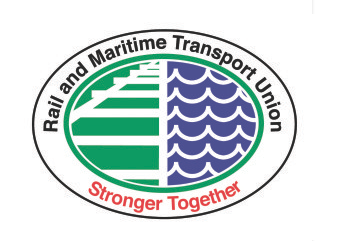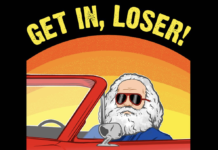
The union representing the country’s rail workers is condemning KiwiRail’s decision to replace the current electric locomotive fleet on the North Island Main Trunk Line with an overseas-made diesel locomotive fleet.
“KiwiRail shouldn’t cut corners. No one wants to return to outdated diesel locomotives,” said Rail and Maritime Transport Union (RMTU) General Secretary Wayne Butson.
KiwiRail will phase out the existing electric locomotives over the next two years and replace them with a further eight Chinese-made and diesel-powered locomotives.
“Our train drivers want to reinvest in a clean energy electric fleet. The public is behind us on this too. But KiwiRail is cutting corners and making a decision that’s going to hurt us in the future. The decision feels pre-determined.”
“Our models show that reinvesting in an electric fleet is better for KiwiRail’s wallet in the long term and it’s better for the planet. The current electric fleet saves 8 million litres in fuel each year and the price of upkeep is only $1.13 per km, but the Chinese-made diesel locomotives will guzzle the gas the electric fleet saves and the likely cost of upkeep will be $2.27 per km.”
“Diesel-powered locomotives are the past, not the future,” said Butson.
“It’s a no-brainer really. If we upgraded the electric fleet we could do it in a local workshop employing local people. Instead KiwiRail is sending money offshore to buy more 1970s technology that has proven unreliable time and time again. This is going to cost us in the long run.”
“KiwiRail says the electric fleet operates like a rail system within a rail system, but just like the electric fleet the new diesel fleet can’t operate on all North Island rail lines either. Our rail system already uses multiple wagon classes, multiple locomotive classes and follows multiple operating rules for different train operations and signalling areas. That’s how a good system works. We don’t need to switch to an entirely diesel-powered system. That means going backwards,” explained Butson.
“Our members have always made it clear they prefer the electric fleet because they make for a smoother ride, they’re quieter, more powerful, and the best option for the rugged Central North Island section and our clean green environment.”





Same old same old wheres the new ideas that is why it is time for change and that is what we will see at the 2017 elections people are fed up with the lot we have all the spin and broken promises do they think we have amnesia and can forget the last 8 years. I doubt it.
Kiwirail’s Board of Directors + those who support this decision (like Simon Bridges) are short-sighted, backward-looking peasants.
Here we are trying to move to electric cars, and these profit-gougers want to destroy rail by moving the opposite way.
Kiwirail have lost their marbles as solid energy did,
Change the top level and put the workers in charge with a new “Minister of rail to sort this shit out.
And reopen the regional rail routes back up again please!!!!
They probably need to invest in electrification to outlying areas.
That’s the problem. The current arrangement means switches from diesel to electric and back to diesel again, which is horribly inefficient and slow.
So they either had to either convert 100% to diesel or 100% to electric – including all the peripheral spurs. The all-electric option would cost billions.
Although the diesel conversion doesn’t seem at first glance to be a good idea from an environmental point of view, if the diesel conversion provides a faster, more efficient service then it will take more traffic off the roads and will actually reduce diesel consumption and thereby emissions.
Comments are closed.